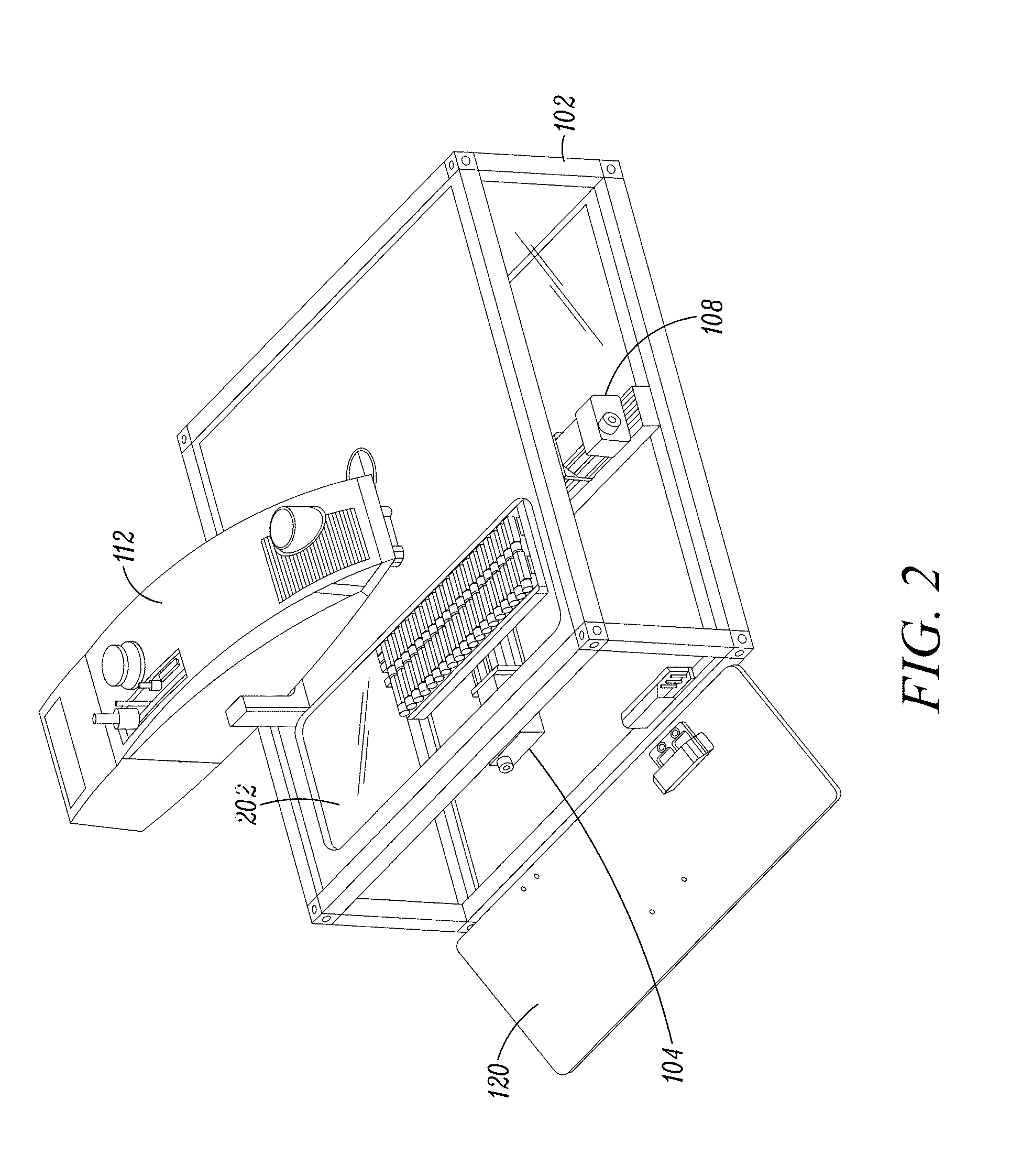System and method of marking articles coated with a laser-sensitive material
a laser-sensitive material and coating technology, applied in the field of systems and methods for marking three-dimensional surfaces coated or doped with laser-sensitive materials, can solve the problems of inability to effectively accommodate barcodes, inability to apply labels, and possible falling off of labels made of adhesive glue, etc., and achieve the effect of high cos
- Summary
- Abstract
- Description
- Claims
- Application Information
AI Technical Summary
Benefits of technology
Problems solved by technology
Method used
Image
Examples
Embodiment Construction
[0050]In an aspect, a laser-marking system for surfaces of articles, such as plastic or glass tubes, polypropylene, polystyrene or polyethylene articles, vials, cryovials, cryogenic vials, microcentrifuge tubes, culture tubes, microtubes, strips of tubes, blood tubes, clinical test tubes, custom-made tubes that have yet to be designed, histo-cassettes, microplates, 96-well plates, cell culture plates, microcentrifuge tubes, microscope slides, PCR tubes, microscope slides, petri dishes, screw cap tubes, conical tubes, snap cap tubes, cluster tubes, paper, polyolefin, foil films, corrugate and folding cartons, custom labware, and the like, may take advantage of laser-sensitive materials that can be located on the surface of the article, wherein the material, when excited by a low-power CO2 laser, is transformed.
[0051]Referring to FIG. 12, one such transformation may result in a colorimetric change in the material 1208 such that when the laser 1202 excites the material 1208 in a patter...
PUM
| Property | Measurement | Unit |
|---|---|---|
| Color | aaaaa | aaaaa |
| Height | aaaaa | aaaaa |
| Sensitivity | aaaaa | aaaaa |
Abstract
Description
Claims
Application Information
 Login to View More
Login to View More - R&D
- Intellectual Property
- Life Sciences
- Materials
- Tech Scout
- Unparalleled Data Quality
- Higher Quality Content
- 60% Fewer Hallucinations
Browse by: Latest US Patents, China's latest patents, Technical Efficacy Thesaurus, Application Domain, Technology Topic, Popular Technical Reports.
© 2025 PatSnap. All rights reserved.Legal|Privacy policy|Modern Slavery Act Transparency Statement|Sitemap|About US| Contact US: help@patsnap.com



